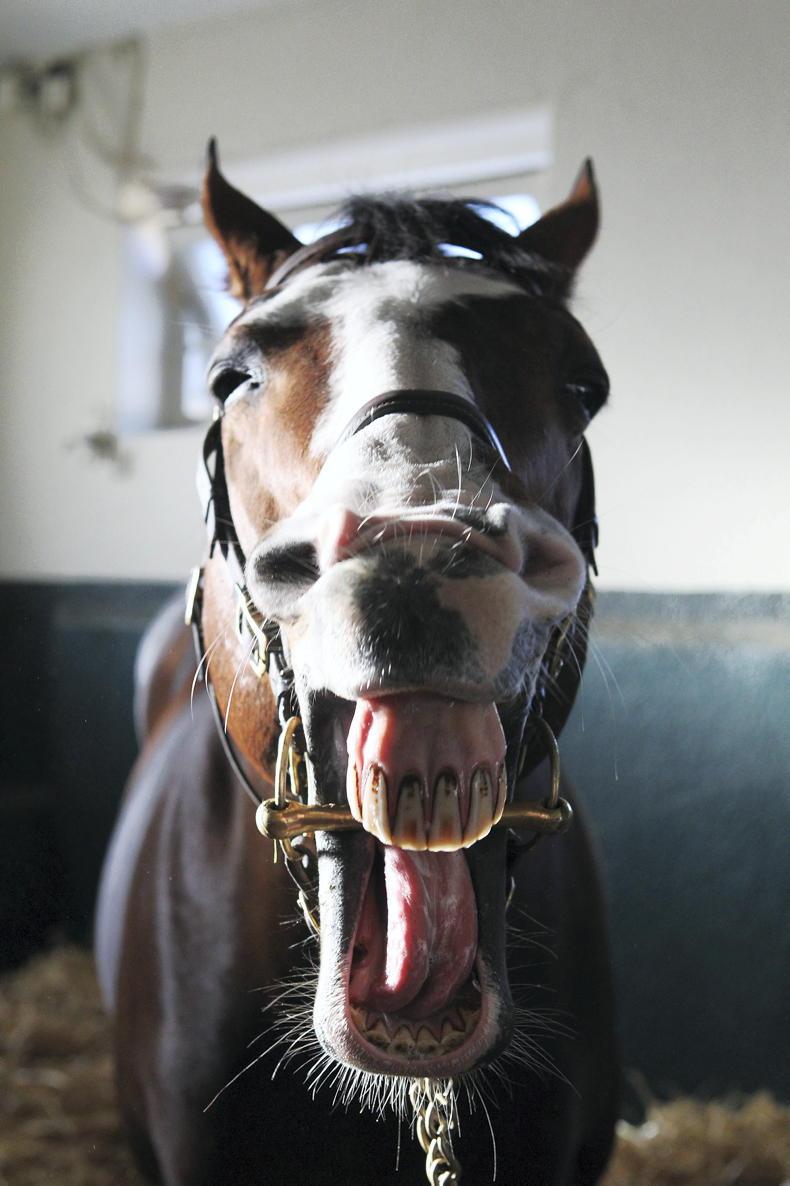OUR three-year-olds all got their teeth done before they went off to be backed in November and, in December, the rest of the yard had their check-ups from our equine dentist. Seeing the dentist at work (mine always shows me what she finds) is always a solid reminder why there are so many reasons to get your horses’ teeth checked by a fully qualified equine dentist or veterinary surgeon on a regular basis.
Why is dentistry so important to horse health?
Horses’ molar teeth are continuously growing and this is one of the main reasons why teeth need to be checked. The molars will grow and wear away at a rate of 2-3mm per year. Uneven wear on the molars can lead to sharp enamel points (SEPs) developing, these SEPs can cause ulceration of the cheeks and tongues. Molars should be angled between 13-30 degrees.
Dental disease can take any number of forms in horses, and correct and regular dentistry care is the best way of preventing and dealing with it.
Noticing dental pain
Horses have developed to disguise pain (donkeys even more so), which can often make it very difficult to determine when there is an issue. Studies have focused on and investigated the facial or grimace pain scale as discussed in last week’s Horse Sense.
This scale provides pain diagnosis by evaluating the visual expression behaviour, including facial expressions.
The scale looks at the angle of the ear and the position of the eye/muscle above the eye. The scale works best if whoever is assessing the horse knows them very well and knows what their normal facial expressions are.
Horses and donkeys continue to try to eat, even when they are in a lot of pain, so when weight loss and loss of condition become obvious, the problem has most probably been ongoing for a long period of time.
Signs of dental pain
- Quidding (dropping feed)
- Head shaking
- Excessive salivation
- Napping/unwilling to go forward
- ‘Running through the contact’
- Bucking or rearing
- Slow to eat
- Weight loss
- Bad smell from breath
- Hay dunking
Equine dental disease
Horses can suffer from a range of different forms of equine dental disease. Ulceration can occur on the cheeks or tongue as a result of sharp enamel points. Ulceration can result in horses becoming more sensitive to being handled and causing problems when they are eating.
Complete or partial fractures are another form of equine dental disease and they are not something which should ever be ignored.
However, extraction is not always required. Radiography and CT
scans can sometimes help decide on the best course of action for each individual horse.
Peripheral caries (tooth decay) affects the outer layer of teeth. It can be successfully treated if the cause is identified and management
changed, for example if owners avoid feeding their horse a high sugar diet and maintain high standards of oral hygiene.
Peripheral caries can also lead to secondary diastema. Diastema is when there are abnormal spaces between dental structures. This is a very painful form of equine dental disease.Treatment options include widening, flushing and extraction.
Displaced teeth can also develop as a result of diastema and are a form of equine dental disease. Displaced teeth need to be very closely monitored and they often occur in a bilateral pattern.
A number of other forms of equine dental disease include Equine Odontonclastic Tooth Resorption and Hypercremetosis (EORTH), supernumerary teeth, apical abscess and infundibular caries.
